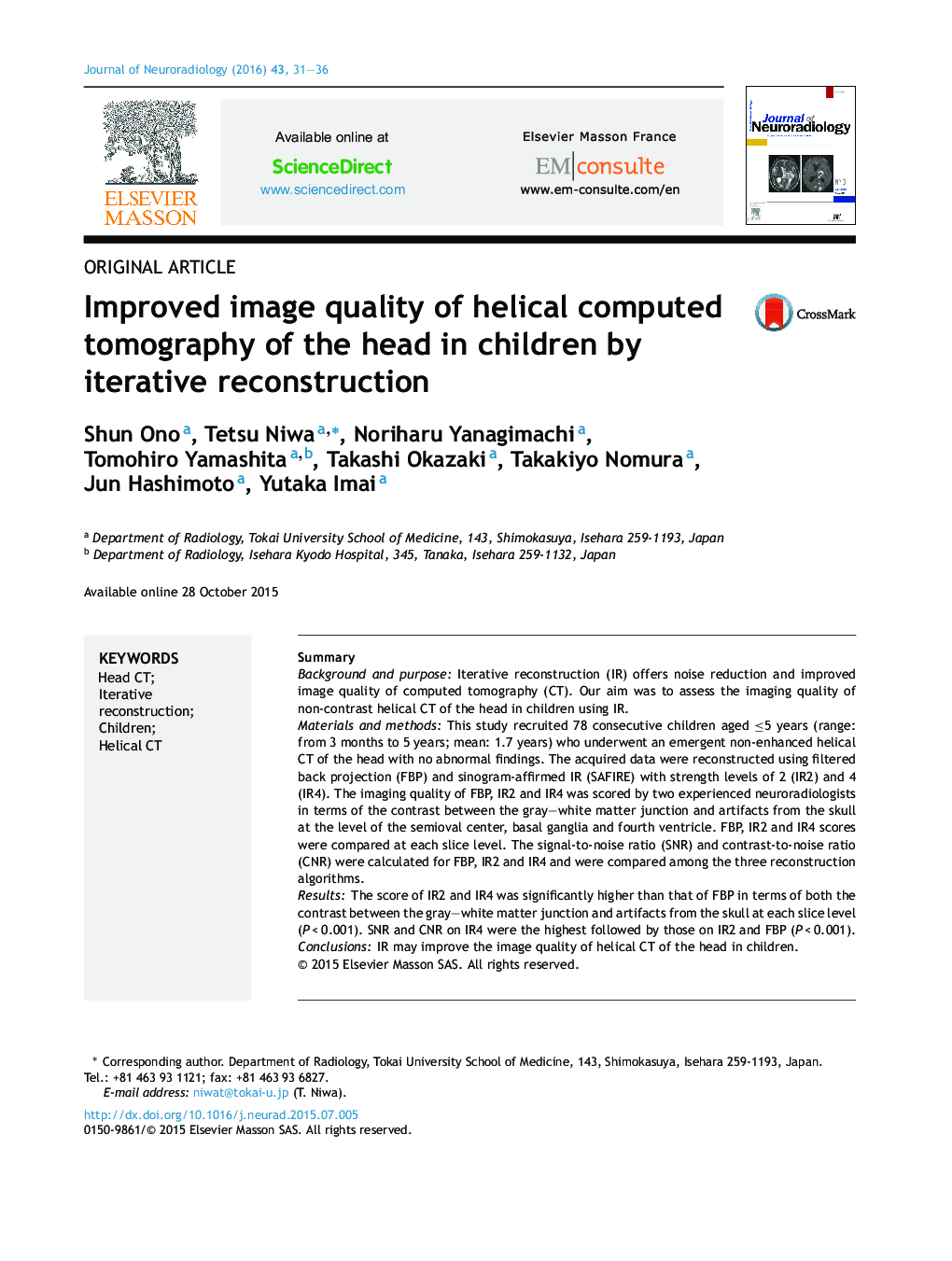| Article ID | Journal | Published Year | Pages | File Type |
|---|---|---|---|---|
| 4233448 | Journal of Neuroradiology | 2016 | 6 Pages |
SummaryBackground and purposeIterative reconstruction (IR) offers noise reduction and improved image quality of computed tomography (CT). Our aim was to assess the imaging quality of non-contrast helical CT of the head in children using IR.Materials and methodsThis study recruited 78 consecutive children aged ≤5 years (range: from 3 months to 5 years; mean: 1.7 years) who underwent an emergent non-enhanced helical CT of the head with no abnormal findings. The acquired data were reconstructed using filtered back projection (FBP) and sinogram-affirmed IR (SAFIRE) with strength levels of 2 (IR2) and 4 (IR4). The imaging quality of FBP, IR2 and IR4 was scored by two experienced neuroradiologists in terms of the contrast between the gray–white matter junction and artifacts from the skull at the level of the semioval center, basal ganglia and fourth ventricle. FBP, IR2 and IR4 scores were compared at each slice level. The signal-to-noise ratio (SNR) and contrast-to-noise ratio (CNR) were calculated for FBP, IR2 and IR4 and were compared among the three reconstruction algorithms.ResultsThe score of IR2 and IR4 was significantly higher than that of FBP in terms of both the contrast between the gray–white matter junction and artifacts from the skull at each slice level (P < 0.001). SNR and CNR on IR4 were the highest followed by those on IR2 and FBP (P < 0.001).ConclusionsIR may improve the image quality of helical CT of the head in children.
